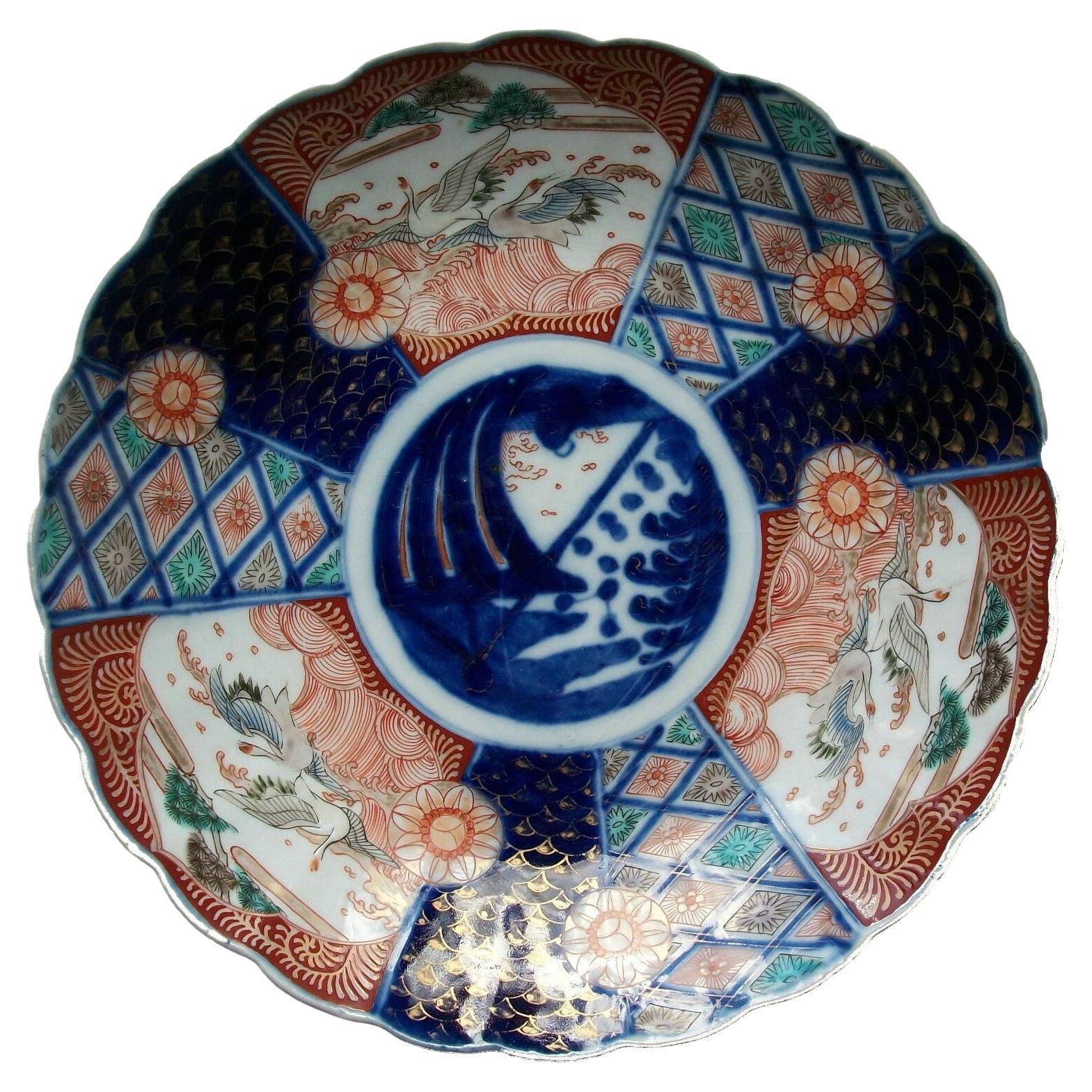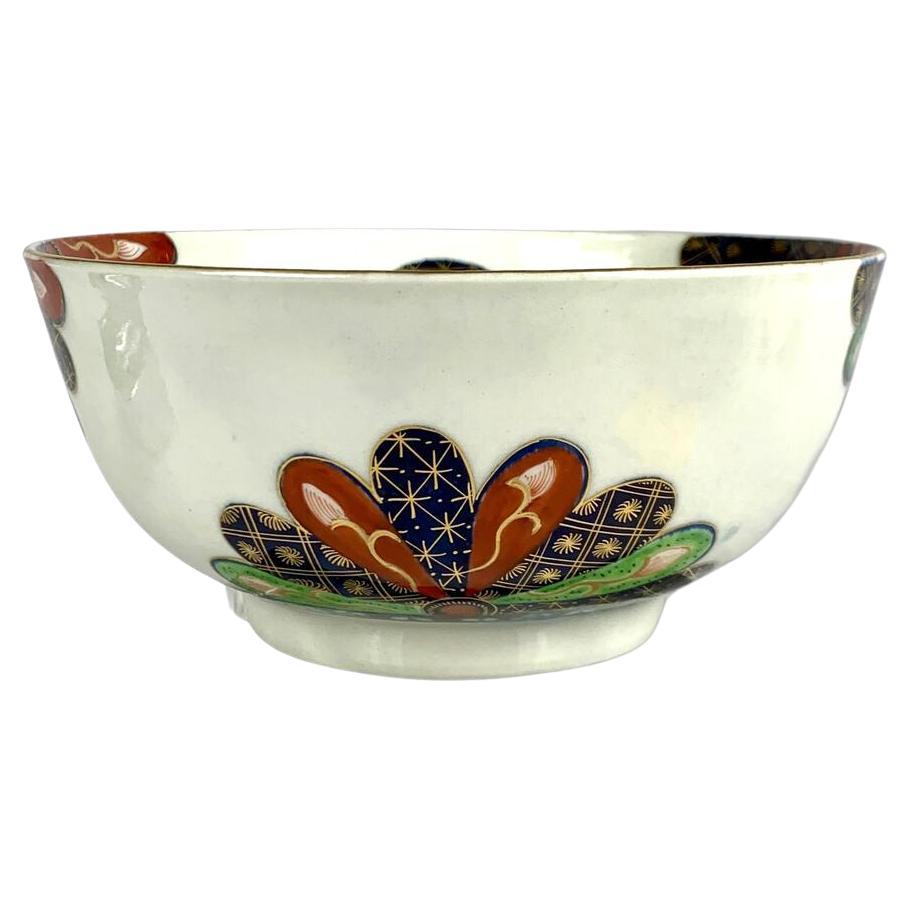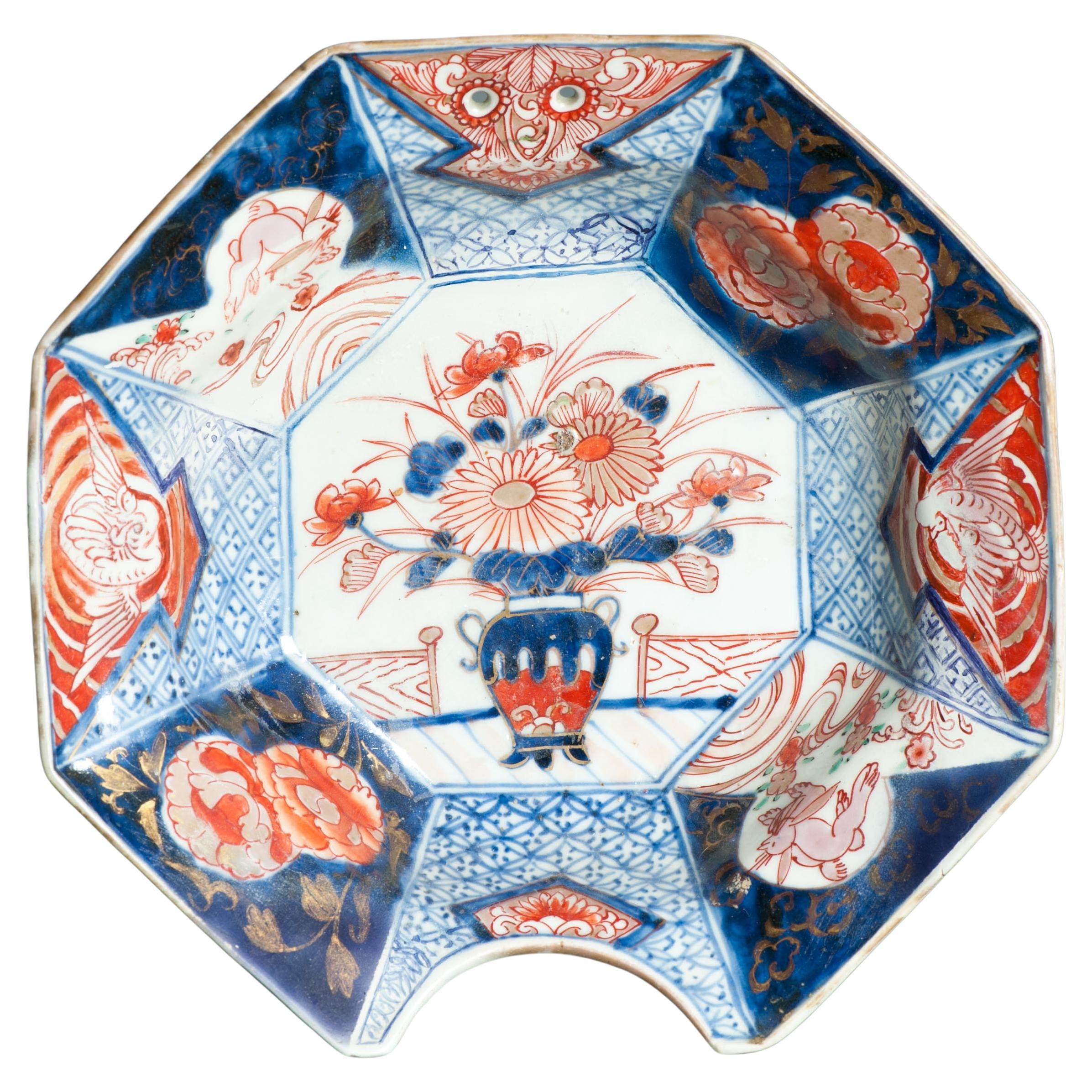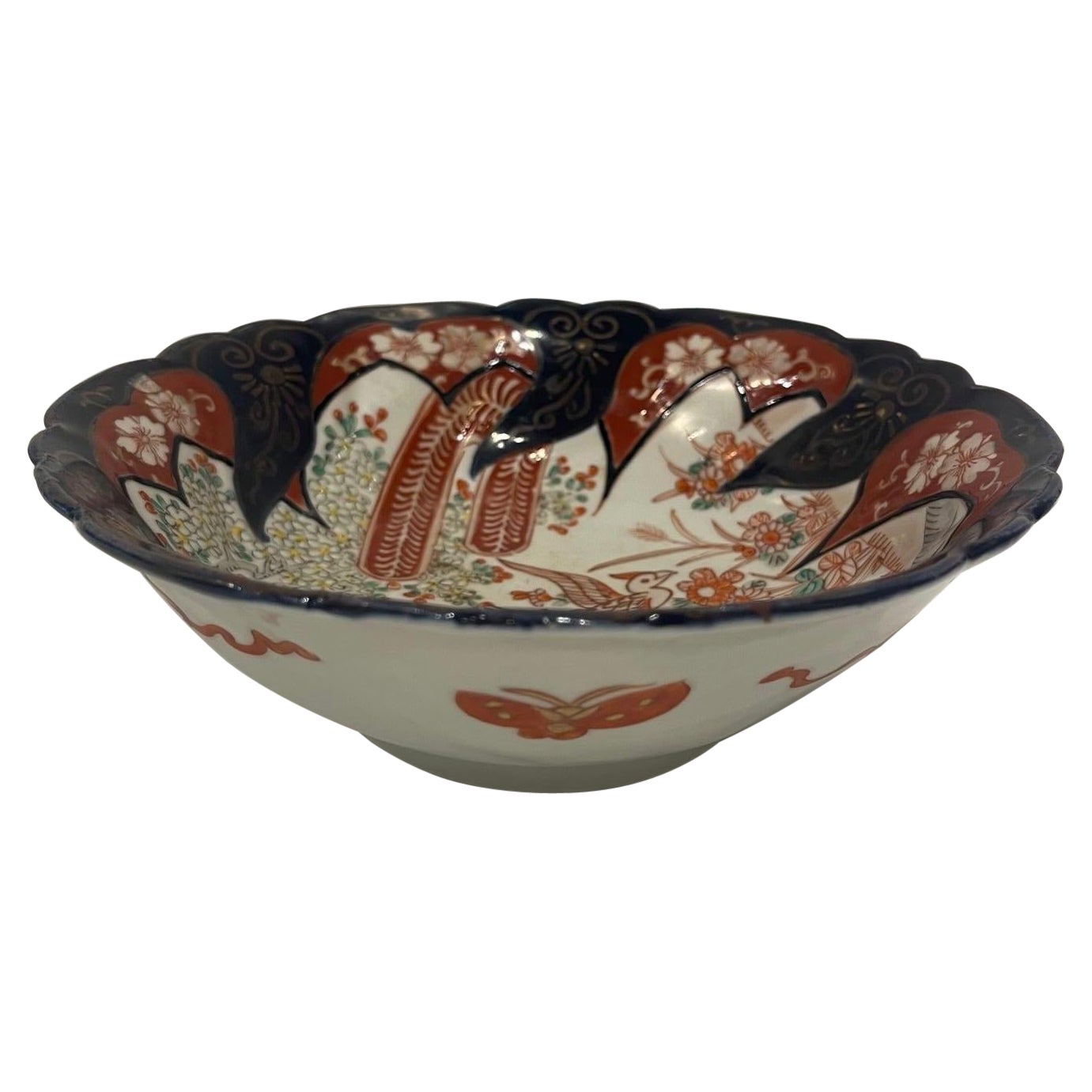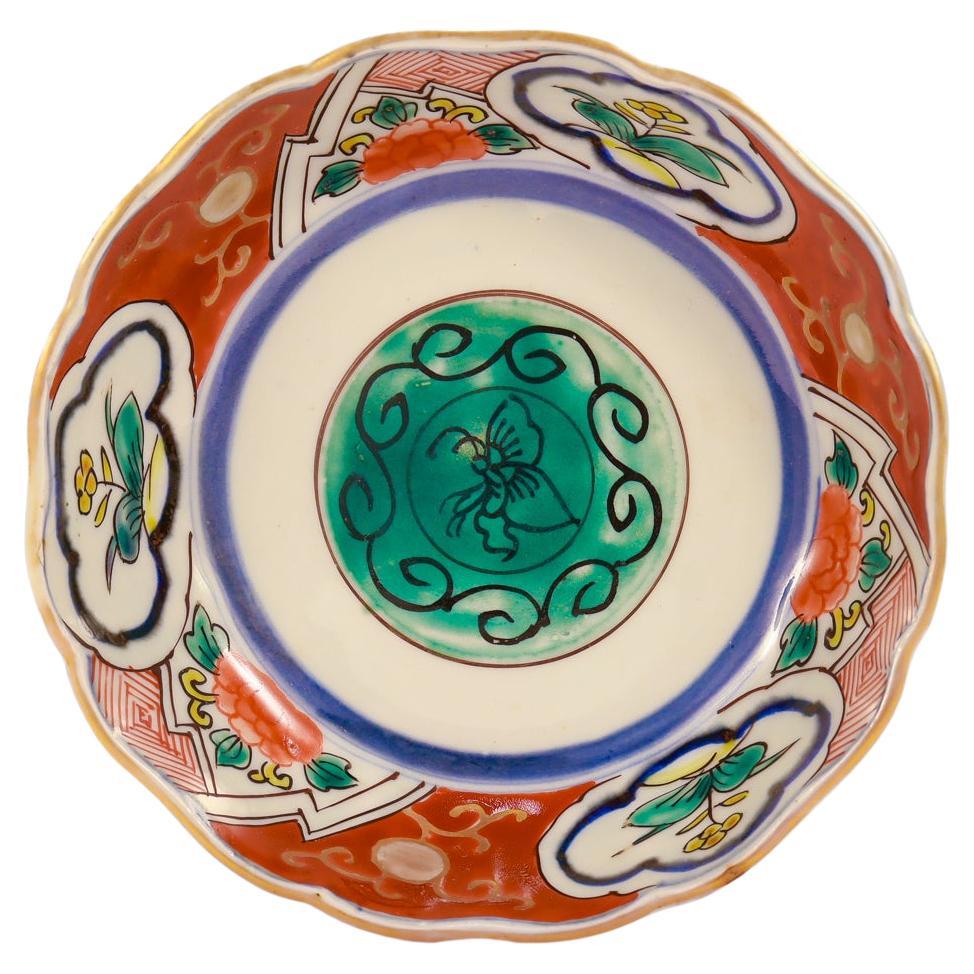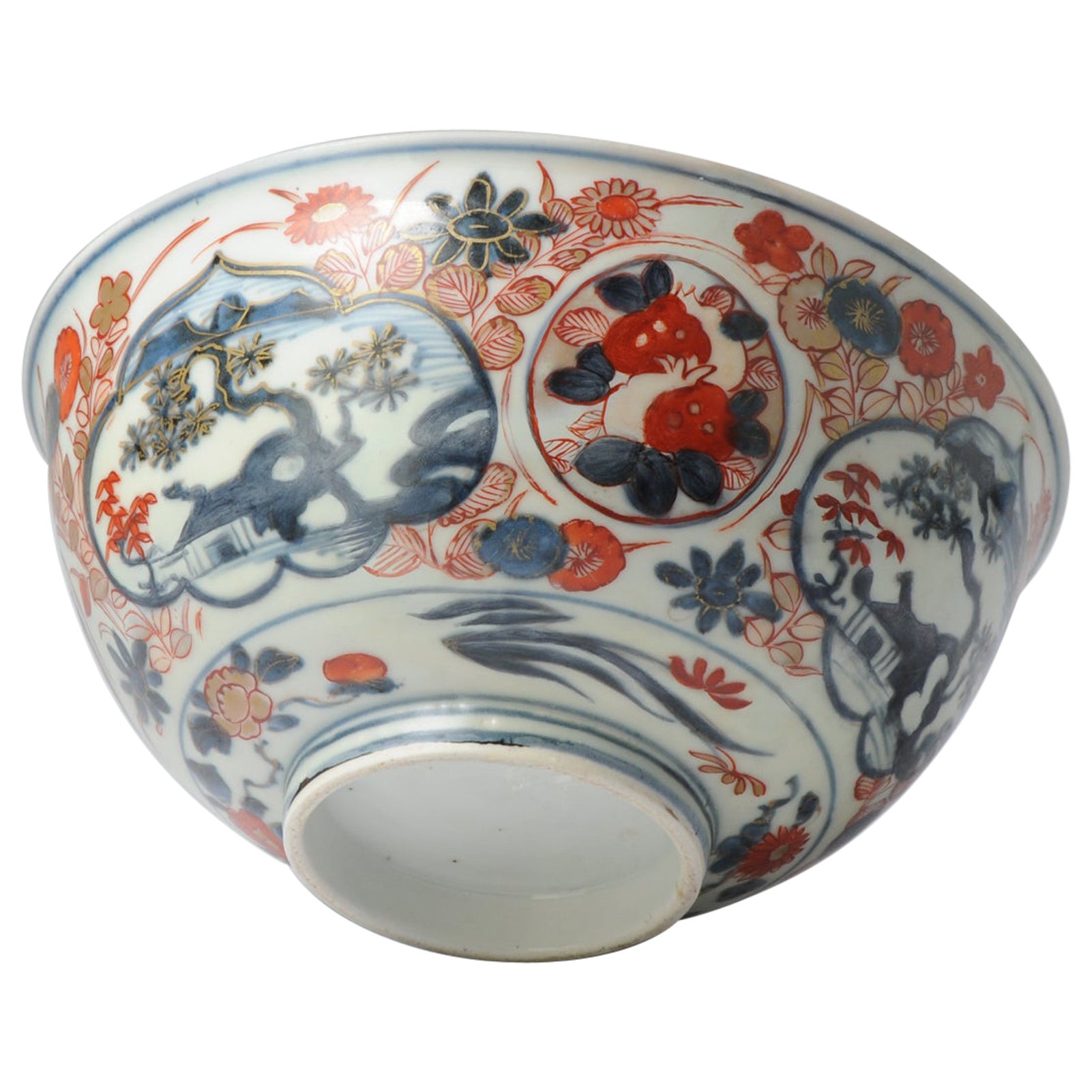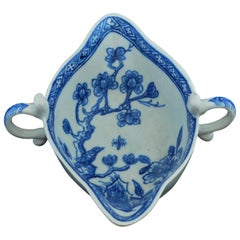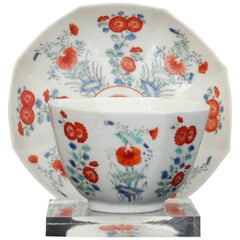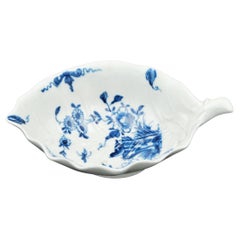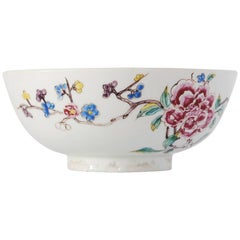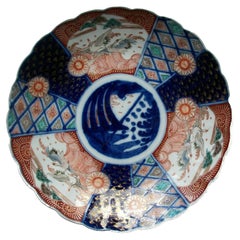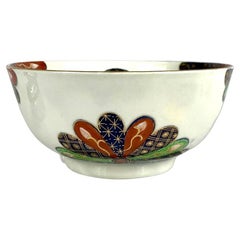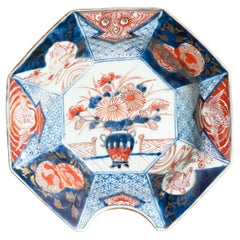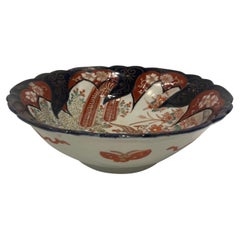Items Similar to Imari Pattern double-handled boat, Lady in a Pavillion pattern. Chelsea C1750
Want more images or videos?
Request additional images or videos from the seller
1 of 11
Imari Pattern double-handled boat, Lady in a Pavillion pattern. Chelsea C1750
$3,800
£2,869.61
€3,285.44
CA$5,366.59
A$5,859.04
CHF 3,071.65
MX$71,160.24
NOK 38,359.94
SEK 36,222.01
DKK 24,522.29
About the Item
Double-handled boat in soft-paste porcelain, decorated with the Lady in a Pavillion pattern, the design and palette both after the Japanese examples of the period. Figure decoration is unusual in this period.
Double-handled sauce boats were a common item of tableware used in the 18th century. They were designed to hold and serve sauces, such as gravy or melted butter, and were often made of silver, pewter, or porcelain. The design of the double-handled sauce boat allowed for easy pouring of the sauce and also prevented the heat from the sauce from transferring to the hands of the person serving.
During the 18th century, dining was an important social event, and the presentation of food was a significant part of the experience. Sauce boats were often displayed on the table alongside other items of tableware, such as tureens and platters, as part of an elaborate table setting. The double-handled design of the sauce boat also made it easier for the person serving to pass the sauce around the table.
In addition to their functional use, sauce boats were often highly decorative and ornate. Many were embellished with intricate designs and engravings, and some were even decorated with precious stones. The popularity of the double-handled sauce boat ended around 1760; they were useful when dishes were passed around the table, but were replaced by single handled boats when it became normal for servants to present dishes to the diners.
- Creator:Chelsea Porcelain (Manufacturer)
- Dimensions:Height: 2.25 in (5.72 cm)Width: 4.5 in (11.43 cm)Depth: 4 in (10.16 cm)
- Style:Japonisme (Of the Period)
- Materials and Techniques:Porcelain,Molded
- Place of Origin:
- Period:
- Date of Manufacture:circa 1750
- Condition:Repaired: Some excellent restoration to edge chips, handle terminals, and internal stress crack. The restoration is invisible except under black light.
- Seller Location:Melbourne, AU
- Reference Number:Seller: 49191stDibs: LU315139977793
About the Seller
5.0
Vetted Professional Seller
Every seller passes strict standards for authenticity and reliability
Established in 2005
1stDibs seller since 2017
80 sales on 1stDibs
- ShippingRetrieving quote...Shipping from: Melbourne, Australia
- Return Policy
Authenticity Guarantee
In the unlikely event there’s an issue with an item’s authenticity, contact us within 1 year for a full refund. DetailsMoney-Back Guarantee
If your item is not as described, is damaged in transit, or does not arrive, contact us within 7 days for a full refund. Details24-Hour Cancellation
You have a 24-hour grace period in which to reconsider your purchase, with no questions asked.Vetted Professional Sellers
Our world-class sellers must adhere to strict standards for service and quality, maintaining the integrity of our listings.Price-Match Guarantee
If you find that a seller listed the same item for a lower price elsewhere, we’ll match it.Trusted Global Delivery
Our best-in-class carrier network provides specialized shipping options worldwide, including custom delivery.More From This Seller
View AllBlue and White Sauce Boat, Bow Porcelain Factory, circa 1751
By Bow Porcelain
Located in Melbourne, Victoria
Of silver form; oval, double lipped, and with scroll handle with stylized mask to each side. The interior painted in blue underglaze with a songbird on a branch, a peony and an inner...
Category
Antique Mid-18th Century English Chinoiserie Porcelain
Materials
Porcelain
Tea Bowl and Saucer, Kakiemon Decoration Chelsea, circa 1752
By Chelsea Porcelain
Located in Melbourne, Victoria
A large octagonal tea-bowl, decorated in the Japanese style.
“The decoration is effective and pleasing, but does not seem to have been very frequently employed” – McKenna.
Pro...
Category
Antique 1750s English Anglo-Japanese Porcelain
Materials
Porcelain
$6,000 Sale Price / set
20% Off
Butter Boat, Two Peony Rockbird Pattern, Worcester, circa 1755
By 1st Period Worcester Dr. Wall
Located in Melbourne, Victoria
A particularly successful dish, formed in the shape of a leaf, and decorated with underglaze blue painting after the Chinese.
The Two Peony Rockbird pattern is a traditional Chine...
Category
Antique Mid-18th Century English Chinoiserie Porcelain
Materials
Porcelain
Bowl with Chinoiserie Decoration, Bow Porcelain Factory, circa 1752
By Bow Porcelain
Located in Melbourne, Victoria
An early example of Bow porcelain, decorated in ‘wet’ famille rose colours; featuring a peony, a bird on a branch, and another in flight. Sacred Scrolls to the interior.
A superb ...
Category
Antique Mid-18th Century English Chinoiserie Porcelain
Materials
Porcelain
Tea Bowl and Saucer, Stork Pattern, Bow Porcelain Factory, circa 1750
By Bow Porcelain
Located in Melbourne, Victoria
Teabowl and saucer, circa 1749-1752:
Finely potted circular bowl and large saucer painted in blue underglaze with the ‘Banana, Stork (Crane) and Fence’ pattern of a banana tree growing through a rock, a fretted fence and an exotic stork. Even glaze with some bluing. Green straw translucency. Base glazed.
Provenance: Taylor Collection; John Wilson Antiques...
Category
Antique Mid-18th Century English Chinoiserie Porcelain
Materials
Porcelain
Salt Glaze Sauce Boat, Mosaic Pattern, English, circa 1755
Located in Melbourne, Victoria
In salt-glazed stoneware, crisply moulded with the Mosaic pattern. The beginnings of the Rococo movement can be seen in the fronds overlaying the more staid mosaic.
Category
Antique Mid-18th Century English Rococo Pottery
Materials
Stoneware
You May Also Like
IMARI - Antique Lobed Porcelain Charger - Hand Painted, Japan, 19th Century
By Imari Porcelain
Located in Chatham, ON
IMARI - Antique hand painted & gilt decorated porcelain charger with lobed edge - Japan - late 19th/early 20th century.
Excellent antique condition - no damage - no restoration - minor gilt loss - base rim chips possibly from a previous plate hanger...
Category
Antique Late 19th Century Japanese Meiji Ceramics
Materials
Porcelain
Antique Worcester Porcelain Bowl Imari Style Dr Wall First Period England C-1755
By 1st Period Worcester Dr. Wall, Royal Worcester
Located in Katonah, NY
This mid-18th century First Period Worcester Porcelain bowl was made in England circa 1755.
It is hand-painted in the beautiful Worcester Imari style ”Fan Pattern.”
The pattern is al...
Category
Antique Mid-18th Century English Japonisme Decorative Bowls
Materials
Porcelain
Antique 18th c Kangxi Imari Barber Surgeon Basin Ca 1710 Japan Porcelain Chinese
Located in Amsterdam, Noord Holland
An Imari Porcelain Barber's Bowl/Basin, used for shaving, bleeding and much more.
Late 17th or early 18th century,
Painted with central flowers, hares and Birds.
Size: 25.8x6.5cm dia...
Category
Antique 17th Century Chinese Qing Ceramics
Materials
Porcelain
Imari Japanese Scalloped Bowl, 19th Century
Located in Savannah, GA
Imari Japanese Scalloped Bowl, 19th Century
Category
Antique 19th Century Japanese Serving Bowls
Materials
Porcelain
Japanese Imari Porcelain Scalloped Bowl or Vide Poche
Located in Philadelphia, PA
A fine old or antique Japanese Imari porcelain bowl.
With a green butterfly crest to the center surrounded by red, blue, green and yellow geometric & floral devices on a white groun...
Category
20th Century Japanese Meiji Ceramics
Materials
Porcelain
Japanese Porcelain Landscape Pagode Village Bowl Imari Edo Period, 18th Century
Located in Amsterdam, Noord Holland
Lovely larger bowl from the edo period. With richly decorated landscape scene. Stunning piece.
Additional information:
Material: Porcelain & Pottery
Type: Bowls
Region of Origin: Ja...
Category
Antique 18th Century Japanese Decorative Bowls
Materials
Porcelain
$398 Sale Price
20% Off
More Ways To Browse
Bone China Japan
Butter Pats Vintage
Ceramics With Eagles
Chelsea Bird
China Dessert Plates
Coalport Botanical
Copeland Dessert
Cornflower Porcelain
Derby Bloor
Du Paquier
Earl Of Shrewsbury
English Porcelain Birds
Fischer And Mieg
Glass Russian Double Headed Eagle
Gold Royal Worcester
Gold Scalloped Plates
Grainger Worcester
Hammersley Porcelain
